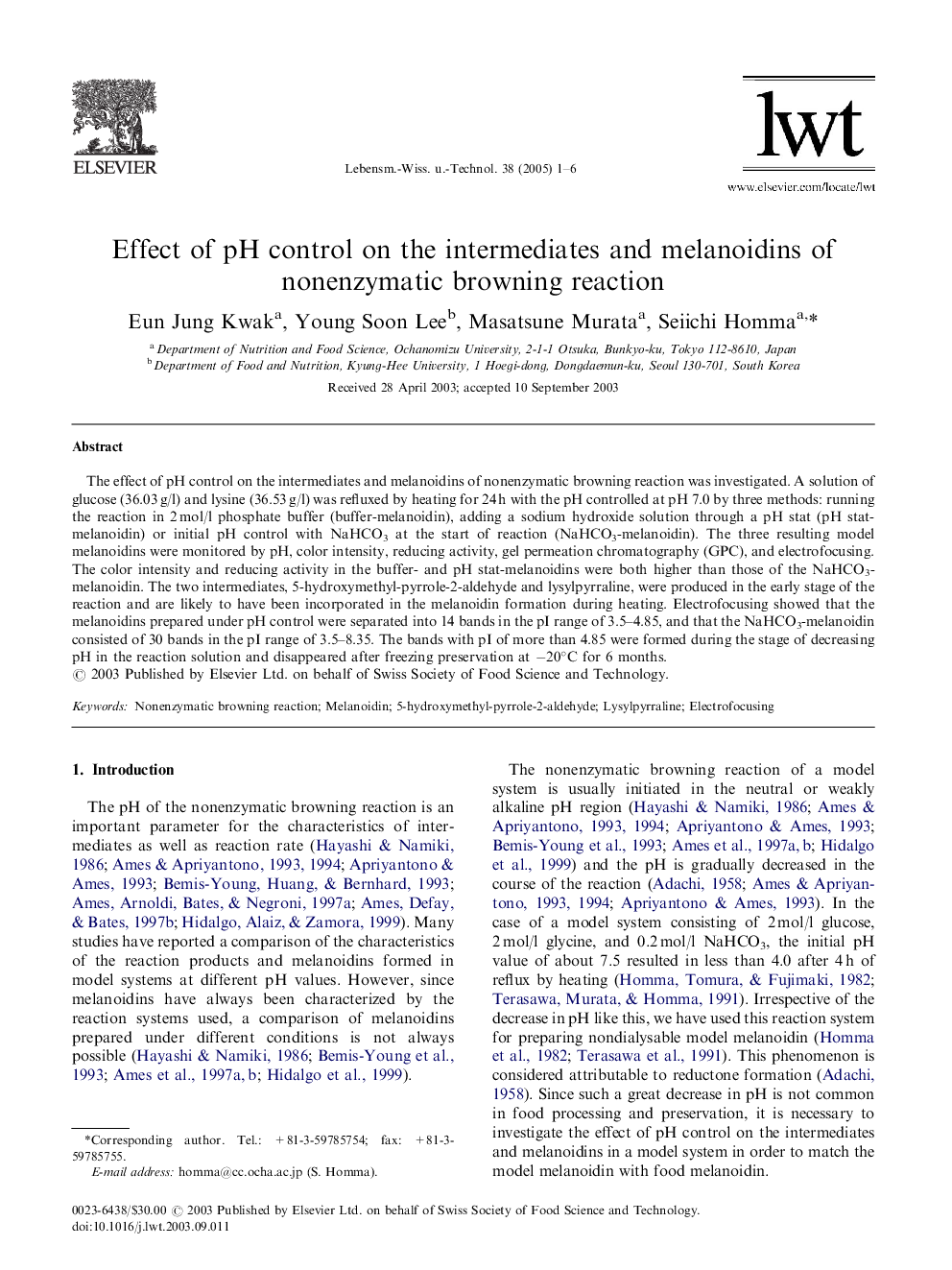| Article ID | Journal | Published Year | Pages | File Type |
|---|---|---|---|---|
| 9488236 | LWT - Food Science and Technology | 2005 | 6 Pages |
Abstract
The effect of pH control on the intermediates and melanoidins of nonenzymatic browning reaction was investigated. A solution of glucose (36.03 g/l) and lysine (36.53 g/l) was refluxed by heating for 24 h with the pH controlled at pH 7.0 by three methods: running the reaction in 2 mol/l phosphate buffer (buffer-melanoidin), adding a sodium hydroxide solution through a pH stat (pH stat-melanoidin) or initial pH control with NaHCO3 at the start of reaction (NaHCO3-melanoidin). The three resulting model melanoidins were monitored by pH, color intensity, reducing activity, gel permeation chromatography (GPC), and electrofocusing. The color intensity and reducing activity in the buffer- and pH stat-melanoidins were both higher than those of the NaHCO3-melanoidin. The two intermediates, 5-hydroxymethyl-pyrrole-2-aldehyde and lysylpyrraline, were produced in the early stage of the reaction and are likely to have been incorporated in the melanoidin formation during heating. Electrofocusing showed that the melanoidins prepared under pH control were separated into 14 bands in the pI range of 3.5-4.85, and that the NaHCO3-melanoidin consisted of 30 bands in the pI range of 3.5-8.35. The bands with pI of more than 4.85 were formed during the stage of decreasing pH in the reaction solution and disappeared after freezing preservation at â20°C for 6 months.
Keywords
Related Topics
Life Sciences
Agricultural and Biological Sciences
Food Science
Authors
Eun Jung Kwak, Young Soon Lee, Masatsune Murata, Seiichi Homma,
